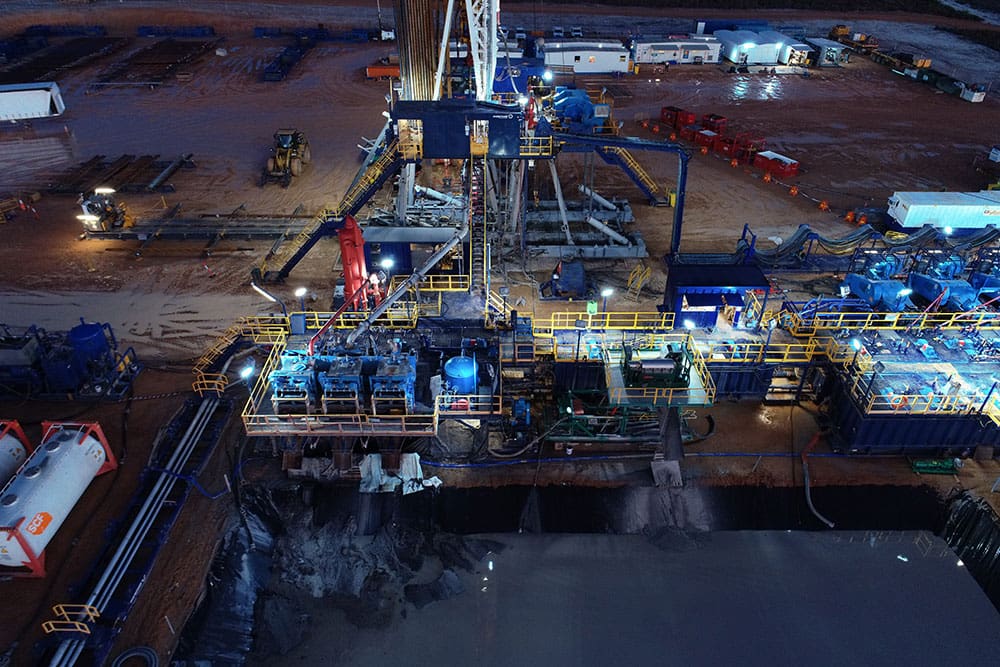
Gas reserves in the West Erregulla region will be the major input into manufacturing urea at the proposed plant near Geraldton. Photo: Strike Energy
WESTERN Australian farmers could in coming years be sourcing urea made near Geraldton from local natural gas which would reduce the cropping sector’s reliance on fertiliser imports.
An initiative of Australian company Strike Energy, the development known as Project Haber plans to produce low-cost urea from its Greater Erregulla gas resources within the Perth Basin.
Strike has completed feasibility studies on the facility which aims to produce 1.4 million tonnes per annum of urea with a blended input of some blue and green hydrogen.
Project Haber is seen as having the potential to displace nearly $1 billion of fertiliser imports.
It will primarily focus on supplying urea to WA farmers, who consume around 30 per cent of urea used in Australia, with surplus product to be made available to international markets.
Reduced reliance on imports
Australian domestic urea manufacturing has been pushed offshore due to rising gas prices and scarcity of long-term competitive gas supplies.
Urea manufacturing has expanded to countries that either have surplus low-cost gas, such as the United States and the Middle East, or countries such as China, where carbon considerations are secondary and urea is manufactured from coal.
As a result, Australia has become dependent on international urea supplies from the Middle East and China to feed the agricultural sector.
“Strike Energy believes Australia should be adding value to its natural resources, rather than just exporting them for others to high grade and sell back to us,” Strike Energy CEO and managing director Stuart Nicholls said:
“Once in production, Project Haber can support the ongoing competitiveness of Australia’s agricultural industries by lowering one of the main cost inputs into Australian farms.”
Geraldton access
Development WA has granted approval for Strike to lease more than 60 hectares of Narngulu Industrial Estate land on the south-eastern edge of Geraldton, and with existing port, rail and road access in this major grain-producing region.
Urea production will consume the majority of carbon from the gas stream, and will enable partial chemical sequestration of the project’s carbon output.
The design of the facility includes an 800,000-tonnes-per-annum ammonia production train, 300,000t of on-site urea storage, power/utilities and steam generation, rail sidings for transport and a 120-kilometre raw-gas pipeline from the Perth Basin.
Strike’s onshore gas resources in the Greater Erregulla region will form the backbone of the commercial viability of the project.
Project Haber will consume 86 terajoules per day of natural gas, and up to 628 petajoules over a 20-year timeframe.
Green energy included
Project Haber includes the construction of a 10-megawatt hydrogen electrolyser.
This will enable Strike to take advantage of the abundant local wind energy generated in the Mid-West region to form a green hydrogen input stream, which would represent around 2pc of the initial hydrogen consumed.
Local renewable energy will also be preferenced where possible to generate the electricity feed into the plant and reduce fuel gas consumption.
The total development is estimated to cost approximately US$1.8 billion (AU$2.30 billion) with a 20-30 year useful life.
“Project Haber is a carbon-conscious development where the natural advantage of converting gas to urea is that a portion of the project’s carbon is returned to the soil.
“Also, with the application of emerging technologies, the development will integrate as much renewable energy into its hydrogen input stream as it can over time.”
Looking for partners
Gross fertiliser revenues from Project Haber are estimated at $540-$700M per annum, based on current urea prices in both wholesale and direct markets.
In April-June this year, Strike will commence a formal offtake tender with various Australian and international urea consumers.
Strike plans to secure offtake agreements for up to 80pc of the product prior to entering into front-end engineering and design for the project.
Towards the end of this year, Strike will begin marketing equity participation in Project Haber, where Strike expects to retain a carried interest of around 30pc.
In 2019, Strike executed an agreement with CSBP Limited, a leading WA fertiliser manufacturer.
Under the agreement, Strike granted CSBP the option to take up to 100PJ of gas produced from West Erregulla.
Science of urea
Gas forms 60-70pc of the cost base for production of urea, a nitrogen-based fertiliser.
Urea is an ammonia-based product which requires very large amounts of hydrogen in the manufacturing process.
Currently the only commercially viable way to achieve this is through steam reforming of methane (CH₄) and splitting the hydrogen from the carbon where the waste product is a very pure carbon dioxide stream.
After the creation of ammonia using the hydrogen in the Haber-Bosch process, adding back the pure carbon dioxide, prills and granulates the ammonia into urea (CH₄N₂O) therefore consuming the original carbon dioxide in the manufacturing process.
When the urea is added back into the ground through farming and agricultural applications, this effectively completes the carbon cycle.
Source: Strike Energy

With Perdamann investing in Project Destiny in the Burrup, are we facing the problem of overproduction of urea?